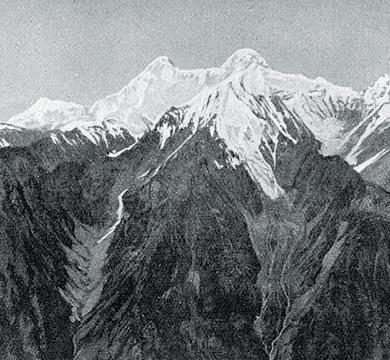There has never been a dearth of British explorers travelling in the Himalaya and writing about it. Most of these men (and women) were specialists in some field or the other — geologists, naturalists — so their travels had a specific purpose. Dr Kurt Boeck, a German gentleman visiting India in the 1890s, didn’t have any such specific occupation, unless it was photography. He doesn’t feature too largely in the pantheon of European travellers in the Himalaya, but going by his photographs, maybe he should.
This quiet German undertook a series of travels in Sikkim, Garhwal and Kumaon in the 90s which appeared in his 1900 travelogue Indische Gletscherfahrten(Indian Glacier Journeys). Amidst his magnificent photographs of the Garhwal and Kumaon Himalaya, what stands out are his portraits of the Bhotias, Tibetans, itinerant sadhus and other village folk that he came across in the mountains. His photographs of Milam (in the Johar valley) and its inhabitants is particularly haunting. Back then, Milam was a vibrant trading post with Tibet, not the abandoned ghost-village it is today. Thus he takes photographs of families from the village, of Bhotia traders on their way to Tibet and Tibetan traders in Milam, Aghori sadhus with their skulls — and even a couple of women shamans in the forests. His photos of Nanda Devi and other peaks and glaciers are simply superlative.
Sadly, no English translation of his travelogue exists, but his photographs chronicle a time that has completely vanished. Boeck himself went on to register great feats as a photographer, including a photographic tour of the Samoa islands and one of Nepal, thus becoming one of the first Europeans to travel in that country.




